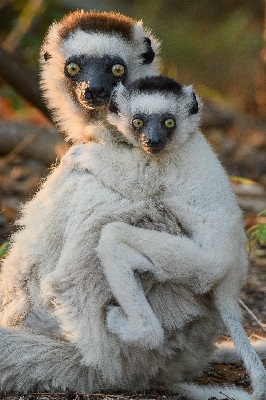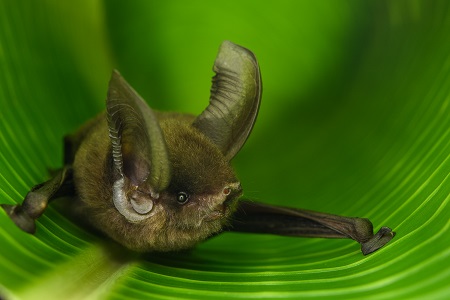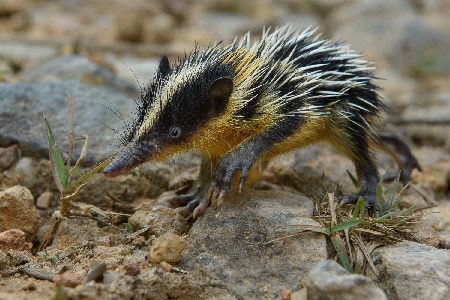Endangered mammals of Madagascar
A new study reveals that it would take 3 million years to recover the number of species that went extinct due to humans on Madagascar. However, if currently threatened species go extinct, recovering them would take more than 20 million years, much longer than what has previously been found on any other island.
From unique baobab species to lemurs, the island of Madagascar is one of the world’s most important hotspots of biodiversity. Approximately 90% of its species of plants and animals are found nowhere else. After humans settled on the island 2500 years ago, Madagascar experienced many extinctions, including giant lemurs, elephant birds and dwarf hippos. However, unlike most islands, Madagascar’s fauna is still relatively intact. Over two hundred species of mammals still survive on the island, including unique species such as the fossa and the ring-tailed lemur. Alarmingly, over half of these species are threatened with extinction, primarily due to human influence. How much have humans perturbed Madagascar away from its natural state, and what is at stake if environmental change continues?

Malagasy mammals
A team of biologists and paleontologists from Europe, Madagascar and the United States set out to answer these questions by building an unprecedented new dataset describing the evolutionary relationships of all species of mammals that were present on Madagascar at the time that humans colonized the island. The dataset includes species that have already gone extinct and are only known from fossils, as well as all living species of Malagasy mammals. The researchers identified 249 species in total, 30 of which already are extinct. Over 120 of the 219 species of mammals that remain on the island today are currently classified as threatened with extinction by the IUCN Red List, due to habitat destruction, climate change and hunting.

Simulation
Using a computer simulation model based on island biogeography theory, the team, led by biologists from the University of Groningen (Netherlands), Naturalis Biodiversity Center (Netherlands) and the Association Vahatra (Madagascar) found that it would take approximately 3 million years to regain the number of mammal species that were lost from Madagascar in the time since humans arrived . However, if currently threatened species go extinct, it would take much longer: about 23 million years of evolution would be needed to recover the same number of species. Just in the last decade, this figure has increased by several million years, as human impact on the island grows.

Extinction wave
The staggering time it would take to recover this diversity surprised the scientists: 'It is much longer than what previous studies have found on other islands, such as New Zealand or the Caribbean', leading researcher Luis Valente says The results of this new research, published in the scientific journal Nature Communications on 10 January, suggest that an extinction wave with deep evolutionary impact is imminent on Madagascar unless immediate conservation actions are taken. However, the study finds that with adequate conservation action we may still preserve over 20 million years of unique evolutionary history on the island. Valente: 'It was already known that Madagascar was a hotspot of biodiversity, but this new research puts into context just how valuable this diversity is. These findings underline the potential gains of the conservation of nature on Madagascar from a novel evolutionary perspective.'
Reference: Nathan M. Michielsen, Steven M. Goodman, Voahangy Soarimalala, Alexandra A.E. van der Geer, Liliana M. Dávalos, Grace I. Saville, Nathan Upham, Luis Valente: The macroevolutionary impact of recent and imminent mammal extinctions on Madagascar. Nature Communications, 10 January 2023.
| Last modified: | 27 June 2024 2.32 p.m. |
More news
-
21 November 2024
Dutch Research Agenda funding for research to improve climate policy
Michele Cucuzzella and Ming Cao are partners in the research programme ‘Behavioural Insights for Climate Policy’
-
13 November 2024
Can we live on our planet without destroying it?
How much land, water, and other resources does our lifestyle require? And how can we adapt this lifestyle to stay within the limits of what the Earth can give?
-
13 November 2024
Emergentie-onderzoek in de kosmologie ontvangt NWA-ORC-subsidie
Emergentie in de kosmologie - Het doel van het onderzoek is oa te begrijpen hoe ruimte, tijd, zwaartekracht en het universum uit bijna niets lijken te ontstaan. Meer informatie hierover in het nieuwsbericht.

